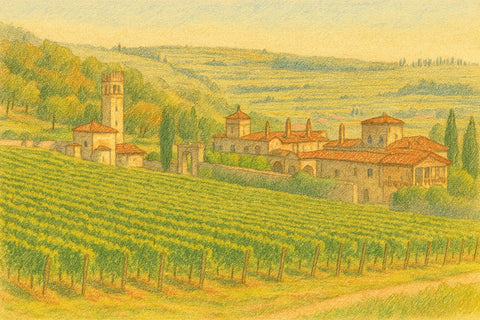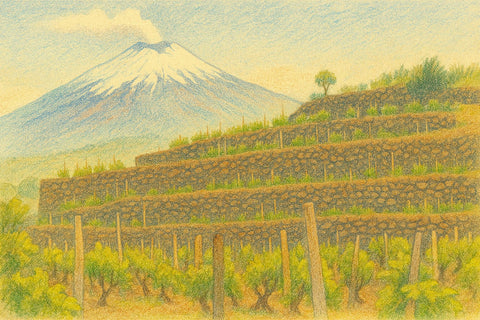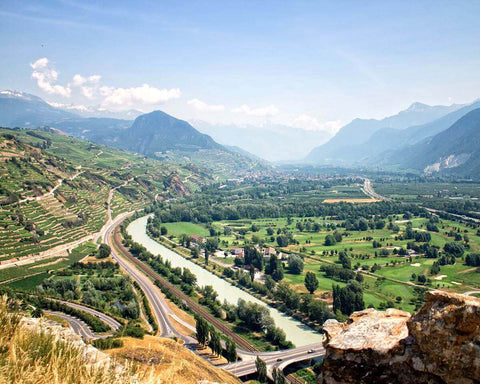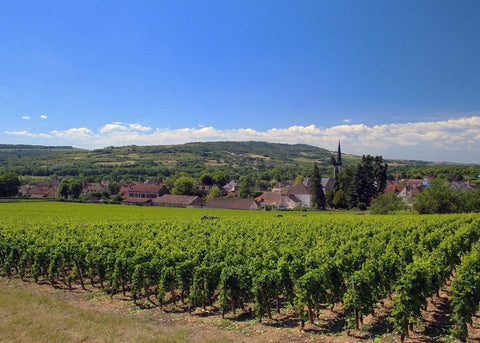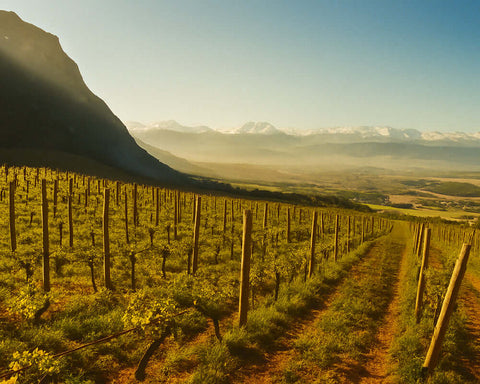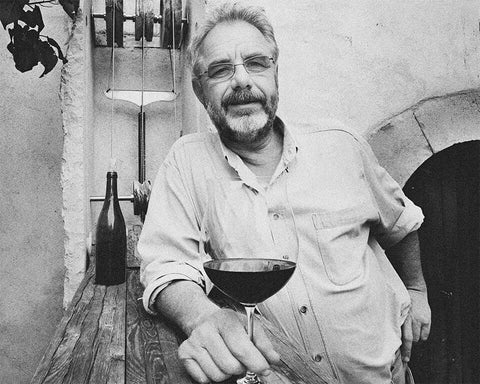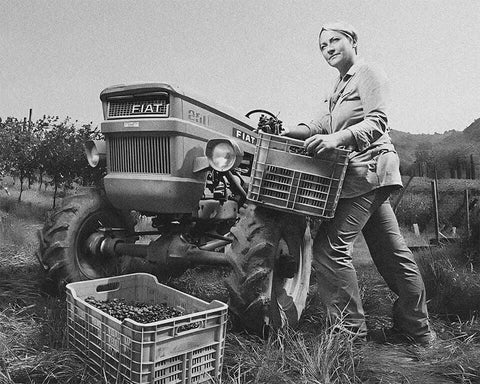Valpolicella is versatility in a glass—cherry-bright Valpolicella, velvet Ripasso, and contemplative Amarone, all shaped by limestone and volcanic slopes from Classica to Valpantena. Explore Corvina-led blends with freshness, spice, and ageworthy depth. Use our guide to decode zones, styles, and pairings, then shop bottles that match your taste and table. Discover growers, vintage tips, serving advice, and reliable food matches.
Overview
Valpolicella—north of Verona in the Veneto—is one of the most famous Italian wine regions. It's known mainly for red wines, defined by a wide spectrum of styles: fresh, red-fruited Valpolicella, structured Superiore, the secondary-fermented Ripasso, and the air-dried, powerful Amarone della Valpolicella alongside sweet Recioto. Diversity stems from a mosaic of valleys, altitudes, and soils that shape Corvina-led blends in markedly different ways. For curated bottles, see our editor-selected best sellers.
Terroir: Geography, Geology, Climate
Geography
Valpolicella stretches from the foothills of the Lessini Mountains to the Adige River. Vineyards occupy hillside bands (≈120–500+ m a.s.l.) across several valleys opening toward Verona and Lake Garda. Exposures and elevation gradients drive diurnal range and harvest timing.
Geology
The region is geologically complex. To the north and west, limestone and marl dominate (calcareous, well-drained, cooler), favoring perfume, acidity, and fine tannin. Toward the east/south, more basaltic and volcanic components appear, often yielding darker fruit, spice, and broader mid-palates. Alluvial fans near valley floors can increase vigor and require vigilant canopy and yield management.
Climate
A temperate sub-continental climate is moderated by Lake Garda’s influence and mountain ventilation. Summers are warm but rarely extreme at elevation; long, dry autumns aid appassimento. Diurnal swings contribute to aromatic clarity and phenolic finesse.
History & Classification
Dry and sweet wines from Valpolicella have been documented since antiquity. The modern framework: Valpolicella DOC (1968), Valpolicella Ripasso DOC (2010), and Amarone della Valpolicella DOCG / Recioto della Valpolicella DOCG (2010). Regulations codify grape composition (Corvina/Corvinone with Rondinella and others), yields, minimum alcohol, and aging, with stricter standards for Superiore, Amarone, and Recioto.
Grapes & Viticulture
- Corvina Veronese – Core aromatic and structural grape: sour cherry, violet, almond; high skin-to-juice ratio; late ripening; crucial for appassimento integrity.
- Corvinone – Larger berries; adds structure and dark fruit; increasingly valued in premium blends.
- Rondinella – Color, floral lift, and appassimento resilience.
- Oseleta (minor) – Dense color and tannin, useful in small proportions.
- Molinara (historic) – Acidity and saline notes; now used sparingly.
Training systems include pergola veronese (traditional, shading bunches—useful for sun and appassimento suitability) and Guyot (quality focus with yield control). Precision viticulture—green harvest, clonal/massal selection, altitude-specific canopy—aligns phenolic with sugar ripeness.
Zones & Style Tendencies
While producer intent and vintage can outweigh generalizations, consistent patterns emerge across the main areas:
- Valpolicella Classica (west/northwest of Verona: Fumane, Marano, Negrar, Sant’Ambrogio, San Pietro in Cariano) — Calcareous marls and higher altitudes. Wines are perfumed and red-fruited with lively acidity and fine tannins; Amarone shows tension and aromatic lift.
- Valpantena (north of Verona) — A single valley with cool air drainage and mixed limestone/basalt. Balanced profiles: clear cherry fruit, floral spice, and polished tannic frames; increasingly strong identity for both Ripasso and Amarone.
- Valpolicella Orientale (Illasi, Mezzane, Tregnago & adjacent valleys) — More volcanic influence and warmer exposures at lower elevations. Darker fruit, sweet spice, and broader mid-palates; powerful Amarone with generous texture; freshness preserved at altitude.
Appellations & Styles
Valpolicella DOC
Corvina-led blends vinified dry, typically in stainless steel for purity. Styles range from basic (fresh cherry, violet, almond) to Superiore (higher minimum alcohol and aging, often partial oak) with greater depth and structure—excellent with a wide range of cuisine.
Valpolicella Ripasso DOC
“Re-passed” over warm Amarone/Recioto pomace, initiating a refermentation that increases alcohol, extract, and aromatic complexity. Expect darker cherry, plum, dried flowers, cocoa, and a firmer frame—bridging Valpolicella and Amarone in body and intensity.
Amarone della Valpolicella DOCG
Produced from appassimento: healthy bunches are air-dried ≈3–4 months in ventilated lofts before fermentation to dryness. The result is full-bodied, high-extract wine with elevated alcohol (often 15–16% abv), dried cherry/fig, balsam, spice, and structural tannin. Best examples retain acidity and a savory finish. (If you prefer lower additives, read our primer on low-sulfites wine.)
Recioto della Valpolicella DOCG
Sweet counterpart to Amarone, stopping fermentation to retain residual sugar. Aromas of dried red fruits, chocolate, and spice; balanced by acidity and fine tannins—classic with blue cheeses or chocolate desserts.
Winemaking Approaches
- Fermentation: Valpolicella/Superiore in stainless or concrete for freshness; Ripasso employs Amarone pomace; Amarone/Recioto from dried grapes with extended macerations and temperature management.
- Élevage: From stainless/concrete to large Slavonian botti and older barriques. New oak is used judiciously to avoid masking Corvina’s perfume.
- Appassimento Logistics: Careful fruit selection, ventilated fruttai, and meticulous sorting mitigate botrytis and volatility risks; drying concentrates sugars, acids, tannins, and aroma precursors.
- Style Intent: Increasing focus on balance—alcohol, extract, and freshness—particularly critical in Amarone under warmer vintages.
Many producers pursue organic farming and lower-intervention cellar work; some wines are bottled unfined/unfiltered and may be vegan-friendly.
Food Pairing
- Valpolicella / Superiore: pizza rossa, pasta all’Amatriciana, grilled chicken, salumi, semi-aged cheeses.
- Ripasso: braised pork, ragù, roasted duck, mushroom risotto; fuller mid-palate suits richer sauces.
- Amarone: long-cooked meats, aged cheeses, cocoa-spiced dishes; a meditative wine also suited to contemplative sipping.
- Recioto: gorgonzola, dark chocolate desserts, or as a vino da meditazione.
Climate & Future Outlook
Warmer vintages have increased ripeness reliability but raise alcohol and dehydration management challenges during appassimento. Responses include higher-altitude sourcing, canopy refinements, earlier picks for acidity, and precision drying protocols. The region’s strength—its altitudinal range and soil diversity—supports stylistic breadth even as conditions evolve.
Notable Valpolicella Producers
- Giuseppe Quintarelli (Negrar; benchmark artisanal Amarone/Ripasso)
- Dal Forno Romano (Illasi; modern precision, power, longevity)
- Allegrini (Fumane; wide range, classically styled to contemporary)
- Masi (Marano; appassimento research, multiple crus)
- Tommasi (Pedemonte; historic house with broad portfolio)
- Speri (Classica; single-vineyard focus, traditional botti)
- Tedeschi (Pedemonte; cru bottlings, terroir transparency)
- Bertani (Grezzana; heritage producer, cellar-worthy Amarone)
- Ca’ La Bionda (Marano; organic, site-driven Classica wines)
- Monte dall’Ora (San Pietro; biodynamic, elegant, savory profiles)
- Zenato (Peschiera/Valpolicella; Amarone & Ripassa)
- Le Ragose (Classica; altitude, tension, aging capacity)
- Brigaldara (Marano; balanced Amarone/Ripasso, cru selections)
- Musella (Valpantena; biodynamic estate, finesse-first)
- Viviani (Mazzano; altitude Amarone with lift)
For hand-picked options across styles, browse our best-sellers; selections often include Valpolicella, Ripasso, and Amarone from quality-minded growers.

